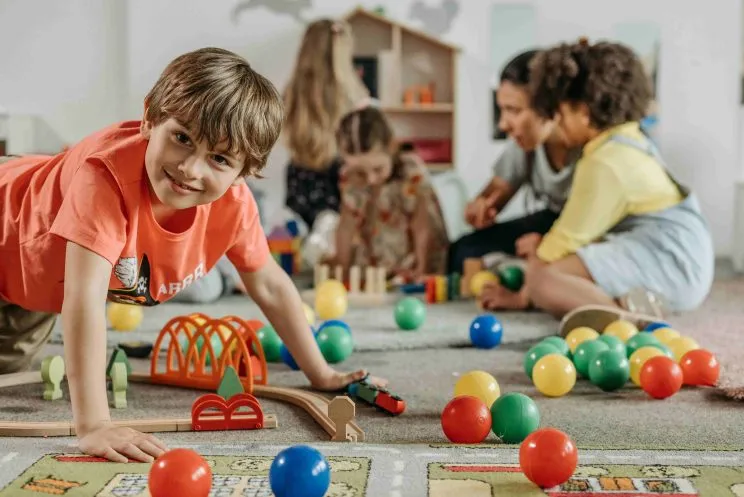Why Are Brain Breaks Important
reviewed by Jo-ann Caballes
Updated on June 30, 2025
Brain break activities are what keep children focused, engaged, and happy during the lessons. These short brain breaks take place before boredom, fatigue, and distraction set in. This helps prevent outbursts and burnout and, essentially, keeps kids interested. Brain breaks in the classroom (or during one-on-one sessions) help kids reset, rest their brains, and simply do something else for a couple of minutes. Eventually, children are more relaxed and perceive information more easily.
What is a brain break?
Here’s a short definition for a brain break: brain breaks are simple techniques that allow students to take a short mental break of 3-5 minutes. They are normally performed in a classroom or academic environment, but they can be used in similar learning environments where a mental reset is needed. Brain breaks can take place anywhere, both indoors and outdoors, but they have to be structured and controlled by a teacher (or a parent).
Sari Beth Goodman, M.A., a certified parent educator and coach, shared her outlook on brain breaks with us:
“Our brains are always busy. A brain break is a pause from a task that requires intense focus. It is not a literal stop.”
Kids’ brain breaks don’t have to be overcomplicated—teachers don’t have to plan super entertaining activities to re-energize kids. Simple techniques like singing a song, dancing, stretching, or even deep breathing can give students plenty of time to recharge and “digest” what they’ve learned over the last 15 to 30 minutes. It also allows kids to prepare themselves for new material or practice.
Are brain breaks effective?
Brain breaks have been proven to be highly effective in educational settings.
Once children are overflown with the information they learned in class, their brains fail to perceive anything new. They might feel like they hit the wall and are unable to concentrate anymore. In other words, new information is not stored in the correct way, blocking memory and knowledge.

Short brain breaks allow students to reset their minds, shifting their focus from work to relaxation. During these activities, the brain “takes five” from problem-solving, memorization, and learning. Additionally, it is time for kids to process their emotions and prepare for the next portion of information.
The research backs this up. A 2018 Edutopia article mentions several studies that support the positive effects of brain breaks in the classroom. Another 2016 brain break research found that the students’ focus drops off after 10 minutes of instruction, regardless of age. This indicates that their learning ability decreases for lessons lasting more than 10 minutes. Brain breaks extend learning by allowing a lesson to “restart” for additional 10-minute segments.
Brain breaks are easy to add to a study routine and usually don’t require a lot of preparation. All you need to do is set the timer for anything between 10 and 25 minutes and have students take a 3-5 minute break when the timer goes off. Once students are done, it is safe to say they’re ready to continue with the task at hand.
Some brain breaks involve a lot of movement that enables blood flow in the body and brain. They help students get rid of excess energy and frustration and help prevent outbursts of emotion. Other brain break activities include mindfulness activities, which can be more suitable for students who feel anxious about learning
How do brain breaks help students?
Let’s look into some brain break benefits that are making learning more easy and enjoyable:
Increased Productivity
Brain breaks are great for enhancing focus and attention. Long periods of focused attention are tiring, especially for younger kids with a pretty short attention span. Breaking the learning process into shorter periods helps with increased focus and an improved attention span.
Boosted Motivation
Believe it or not, children need a great deal of motivation to keep learning. If they keep pushing their limits without any reward in sight, they will end up crashing. Engaging in short breaks can add an element of excitement to the learning process, as kids will have something to look forward to. After a mental reset, children become more enthusiastic about their academic tasks.
Stress Relief
Childhood isn’t always fun and games—it can also be filled with stressors, just like adult life. Stress affects children’s ability to learn, memorize, and make decisions. Brain breaks serve as a breather that helps soothe their minds and release tension. Easy yoga poses, stretching, and breathing exercises work perfectly for kids who need help clearing their perspective.
Stimulated Creativity
A 2005 study found that time pressure and stress can significantly reduce creative performance in the workplace. In other words, a relaxed environment allows for more creativity. When students step away from learning and engage in more enjoyable activities, their creativity is unleashed, fostering problem-solving and imagination.
Physical Activity
Being active is not only beneficial for the body. Active brain breaks have a wonderful effect on the mind, too. Movements increase the supply of oxygen and nutrients, making the brain function at its best.
Brain breaks for learning math
Brain breaks are essential for maintaining focus and enhancing productivity, so adding them to math learning sessions will be extremely beneficial. Online math tutoring platforms like Brighterly recognize the importance of brain breaks and actively adopt them into their curricula.
Here’s how Brighterly effectively uses brain breaks for learning math:
Adapting Breaks
Traditional schools can find it challenging to address every child’s learning needs. Brighterly’s tutors know all children are unique, so they build a personalized curriculum for every kid, adding and adapting breaks as needed. For example, some children have a shorter attention span, whereas others won’t benefit from active brain breaks. With Brighterly, all that can be customized.
Brighterly also allows parents to schedule lessons during times when kids are most active and focused. This approach ensures that children are at their peak performance when the lesson is in session.
Balancing Variety and Routine
Brighterly offers a variety of interactive brain breaks, introducing kids to different activities and finding what works best for them. For instance, if your child has math anxiety, calm and quiet breaks might decrease their stress level. Then again, more active kids might need a lot of structure to help them focus.
Encouraging Feedback
At Brighterly, we appreciate the feedback from our youngest students. When it comes to brain break activities, tutors consider how students liked a specific brain break. Our goal is to ensure that they enjoy and benefit from every break they have.
Conclusion
To recap, short, structured brain breaks allow students to reset and recharge, increasing productivity, motivation, and stress relief. By adding brain breaks to their lessons, teachers and tutors help children stay more engaged and motivated, which promotes a more effective and creative learning environment.
Brighterly’s learning strategy is carefully designed to cater to any child’s needs. Brighterly aims to help children maintain focus and enthusiasm for their studies, making learning math an enjoyable and rewarding experience.
Book a demo lesson today, and stop worrying about your child’s math!
















